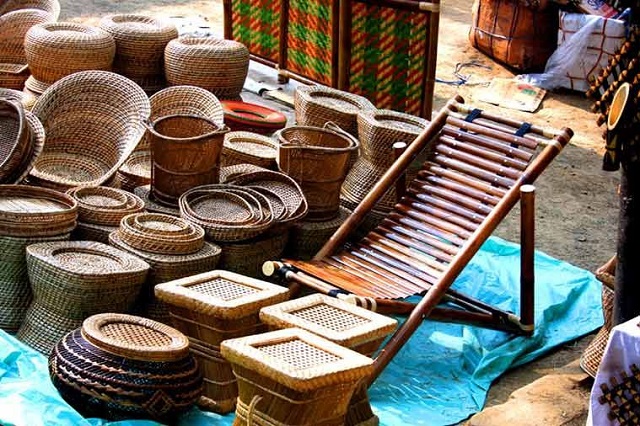
Kampala, Uganda | THE INDEPENDENT | They were shocked and sent into a panic, as COVID-19 paralyzed the world. But at the same pace, they have recovered, innovated, and created art pieces to not only kill boredom but to earn a quick buck.
This is the story of Ugandan artists and artisans, one of the groups that were hardly hit by the lockdown which started in March, almost a year ago yet even with the partial reopening of other sectors, their galleries and crafts villages have remained closed, or illegally operating but with fewer or no customers at all.
The galleries are filled with baskets, mats, fabrics, carvings, shoes, bracelets, beads, earrings, bangles, batiks and paintings, hand made drums, musical instruments, among other items, which used to attract the attention of tourists as they sought souvenirs and gifts upon visiting Uganda. But the tourism industry was equally hit as COVID-19 came with restricted movement across borders. The absence of tourists and the less appreciation of art amongst Ugandans means that many of the people employed in the sector are struggling, and the tunnel is filled with darkness.
From his gallery at the Uganda Art and Crafts Village behind the National Theater in Kampala, Nuwa Wamala Nyanzi, a renowned visual art specialist sits on a daily basis, eagerly waiting for buyers of his internationally ranked batiks. But a day, or even sometimes a week goes without a single sale.
According to Nyanzi, who is also the Vice-Chairperson of the National Arts and Cultural Crafts Association of Uganda-NACCAU, the COVID-19 lockdown affected the users, buyers and makers of arts and crafts. He says that with limited sales, the artisans, designers and artists have no cause for making more products for sale on the market in Uganda.
The culture sector to which the arts belong, employs more than 30 million people globally, according to the UN Educational, Scientific and Cultural Organization (UNESCO). The agency projects that a third of the world’s art galleries could cut their staffing by half or more, as a result of the COVID-19 pandemic.
“The sector which accounts for 30 million jobs is struggling to survive and needs our help,” UNESCO Director-General Audrey Azoulay said in a recent statement. “Culture has helped us out of the crisis. Now we have to help culture and support the diversity to which culture owes its strength,” she added.
However, Nyanzi expressed dismay at the prolonged closure of the sector, recollecting that the government of Uganda isn’t known for taking art seriously let alone appreciating its role in the economic, social and spiritual development of its people. He however explains that many of them have become innovative and embraced digital tools to produce, provide and promote their work.
At NACCAU crafts village, about 80 traders have accumulated ground rent arrears of close to 400 million Shillings, to be paid to the government despite them not making any sales.
Carol Nakisinge, an arts and crafts maker at the East Africa Crafts Market deliberately closed her shop over unpaid rent arrears. She only comes around to chance on the slightest possibility of a buyer coming her way in the day. Nakisinge on a daily basis sold close to 500,000 Shillings before the COVID-19 pandemic, but now toils to sell products worth 20,000 shillings.
Sarah Namajja, a crafts trader along Ggaba road in Bunga is equally counting losses following the effects of COVID 19. She receives a few Ugandan buyers but confirms business is not going on as usual. Namajja who used to make at least one million Shillings every day says that at the moment, she is struggling to get even a single meal.
Since COVID-19 hit, many art events and festivals have been taking place online. However, the biggest percentage of the population cannot access them due to issues such as lack of internet connectivity.
UNESCO has since developed a resource to help governments and policymakers address the challenges artists and cultural professionals are facing during the pandemic. The resource; Culture in Crisis: A Policy Guide for a Resilient Creative Sector also offers advice on strengthening the resilience of the creative industries in the future.
The guide asks governments to take direct support to artists and cultural professionals, indirect support to cultural and creative industries, and strengthen the competitiveness of cultural and creative industries. Specific measures outlined in the policy guide include commissioning and purchase of works, providing compensation for loss of income and promoting programmes to develop new skills, among others.
******
URN
 The Independent Uganda: You get the Truth we Pay the Price
The Independent Uganda: You get the Truth we Pay the Price





